EFQM 2020 organizational excellence model
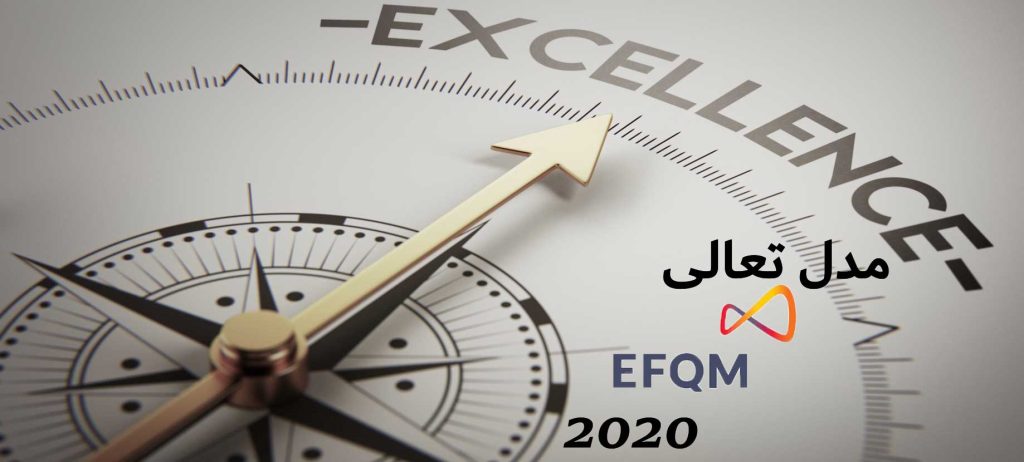
Contact our experts at Modirfa to receive free advice about the organizational excellence model and participate in the EFQM national award for the organizational excellence model.
02188764867-02188761795
What is the EFQM excellence model?
In today's world, changes are happening at a high and relentless speed, and these new global changes can have useful consequences for society, industries and organizations today and tomorrow; For this reason, the EFQM organization, as a progressive thinking, has recently presented a new model of excellence, which, like the previous models, strives for sustainable improvement in organizations with a view to the future.
Relying on design thinking, the new model has evolved from being a simple assessment tool to something that provides a critical framework and method to help with the changes, transformations, and disruptions that individuals and organizations face today. .
To create the model, 2,000 experts reviewed it, facilitated 20 internal workshops and collaborated with more than 60 different organizations, creating a team of experts from across industry and academia who worked together to build this new model. they had.
Variations of the EFQM excellence model
The 2020 version of the EFQM model has made major changes compared to the 2013 version of this model
One of the biggest developments in the 2020 version of the European Organizational Excellence Model is the consideration of the 10 principles of the UNGC and adherence to the 17 Sustainable Development Goals that were approved at the 2015 United Nations meeting.
Of course, it should be noted that before the adoption of sustainable development goals in 2015, the EFQM2013 model also adhered to the goals of the 21st Millennium document, and this shows that the practitioners of the European organizational excellence model have always sought to achieve social justice and green earth.
The EFQM 2013 model consists of two parts, enablers and results, and 9 criteria, five of which are enablers and the other 4 are indicators of results, but the EFQM 2020 model has three parts, orientation, implementation, and results, and 7 criteria. The share of orientation is 2 criteria, implementation is 3 criteria and results are also 2 criteria
In the following, we will examine the criteria of each of these two versions separately:
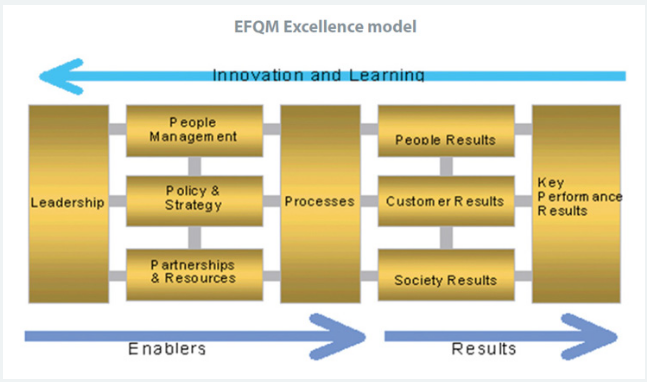
EFQM Criteria 2013
- Enablers
1) Leadership
2) Strategy
3) People
4) Partnerships and resources
5) Processes, products and services
- Results
6) Customer results
7) Human resources results
8) Community results
9) Business results
- How to score the EFQM Excellence Model 2013
50% of the points are assigned to the enablers and the remaining 50% to the results. This is to ensure that the organization has the capacity and ability to maintain its performance in the future. Each part of the existing criteria is evaluated using the radar matrix. are placed and scored, then these points are combined to obtain the reference standard score. In the last stage, the points obtained for the weights are converted into a total score from 0 to 1000.
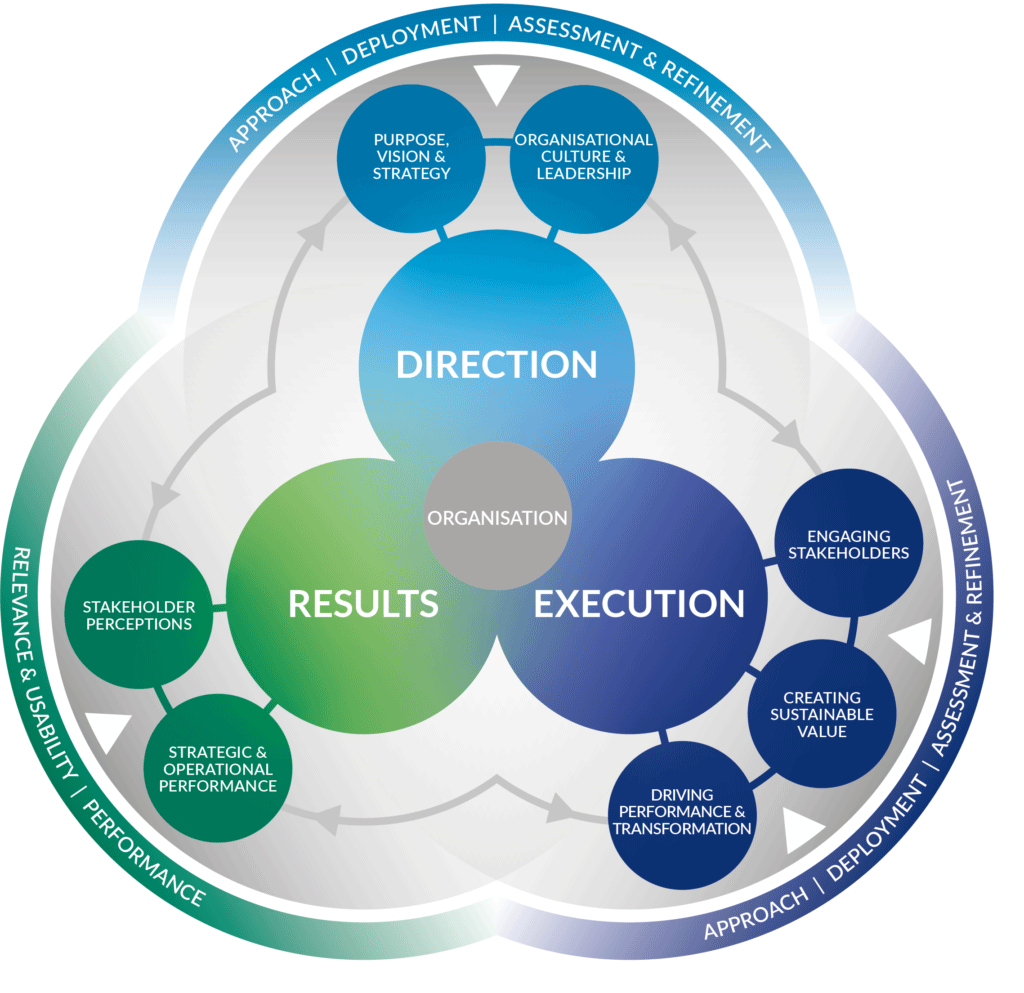
EFQM 2020 criteria
- Approach
1) Orientation
An outstanding organization offers an inspiring, aspirational and strategic vision
1-1) Determining goals and vision
2-1) Identifying and understanding the needs of the beneficiaries
3-1) Understanding the ecosystem, capabilities and basic challenges
4-1) Strategy development
5-1) Designing and establishing governance framework and management system performance
2) Culturalization and leadership
Organizational culture is a specific set of values and rules shared by the organization's employees that, over time, affects how they behave with each other and with key stakeholders outside the organization. The leadership of the organization provides directions from above to the individual or the team
1-2) Guiding culture and values in the organization
2-2) Creating conditions to realize change
2-3) Empowering creativity and innovation
4-2) Uniting and participating in goals, visions and strategies
- Performance
3) Stakeholder participation
For an organization, achieving outstanding results that meet stakeholders' expectations is necessary but not sufficient
1-3) Customer: Building lasting relationships
2-3) Employees: recruitment, participation, development and retention
3-3) Business and Stakeholder Governance - Safe and secure support for continuous support
4-3) Society: Development of cooperation, health and success
3-5) Partners and suppliers: Build relationships and ensure support to create sustainable value
4) Creation of sustainable value
The leading organization understands that creating sustainable value is critical to sustainable success and financial viability.
It drives the performance levels required for today's success while at the same time driving progress and transformation for future success.
1-4) Value design and how to create it
2-4) communication and offer to sell value
3-4) value delivery
4-4) Definition and establishment of general experiences
5) Stimulus of performance and transformation
The present and future of an organization must be able to meet the two important driving needs of performance and transformation at the same time in order to remain successful
1-5) performance guidance and risk management
2-5) Change for the future of the organization
3-5) Innovation guidance and technology application
4-5) Power of penetration of data, information and knowledge
5-5) Managing capital and resources
- Results
6) Opinions of the beneficiaries
This measure is perceptions of results based on feedback from key stakeholders about personal experiences in dealing with the organization.
Of course, examples of the results of stakeholders' perceptions are not limited to these issues.
The results of customer impressions
The results of employee perceptions
Results of perceptions of business and organizational governance
The results of stakeholder perceptions
The results of community perceptions
Results of perceptions of partners and suppliers
7) Strategic results and operational performance
This criterion is the results related to the organization's performance in terms of the ability to achieve goals, provide strategy and create sustainable value and its fit with the future.
Examples of strategic indicators and performance improvement are of course not limited to:
Achieving goals and creating sustainable value
Financial performance
Fulfillment of stakeholders' expectations
Achieving strategic goals
Achieving performance
Achieving transformation
Predictive action for the future
Scores on EFQM 2020 Organizational Excellence Model criteria
Criterion 1: Purpose, vision and strategy - 100 points
Criterion: organizational culture and leadership - 100 points
Criterion 3: Stakeholder participation – 100 points
Criterion 4: Creation of sustainable value - 200 points
Criterion 5: Stimulator of performance and transformation - 100 points
Criterion 6: Stakeholders' opinions - 200 points
Criterion 7: Strategic results and operational performance - 200 points
Implementation and consulting of the EFQM model
If you have questions or need advice about the EFQM model and how to participate in the EFQM national award, you can contact the advisers of the Modirfa:
02188764867
02177930125
Do you need a free consultation?
contact us
02188764867 – 02188761795
EFQM organizational excellence model 2020
In order to improve your organization and achieve significant organizational improvements, we suggest you to implement the EFQM organizational excellence model.


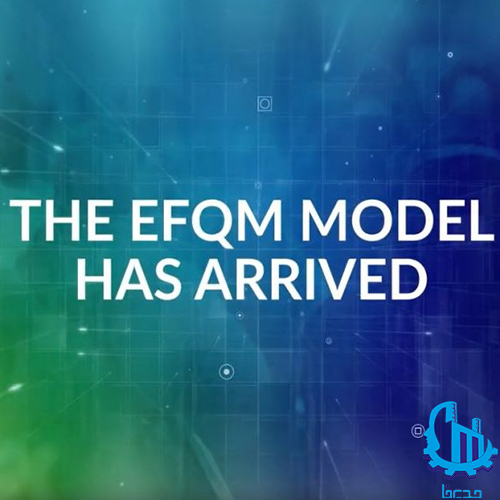
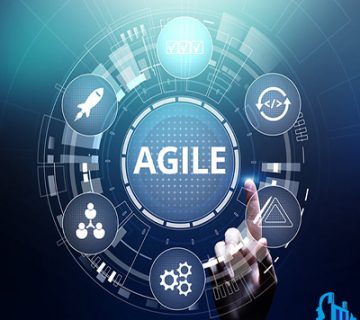
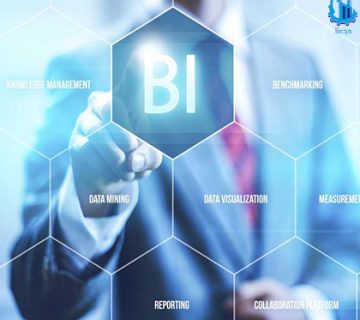
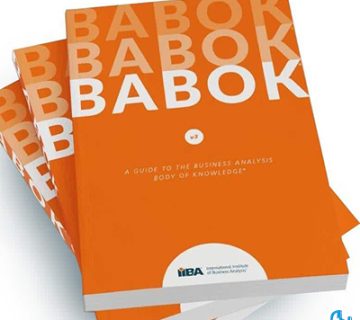
No views